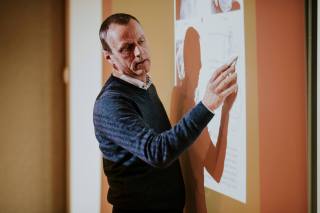Practical guide for symptoms in the pelvic region
The pelvis is a region where numerous symptoms occur. This ranges from low back pain, adductor tendinitis, pelvic instability, constipation to incontinence and much more. Numerous systems come together in the pelvic region: the cranio-vertebro-sacral system, the visceral system (digestive and urogenital) and the locomotor system. As a result, we often see that symptoms within one of these systems very often have their origin in another system (and often in other regions as well!).
How do you tackle this complexity? How can you find out where you should look and how you should deal with it?
The manual presented here is certainly not a 3-day recipe book à la “symptom-dysfunction-technique”!
During this seminar, the numerous anatomical and physiological relationships with regard to the pelvic region will be examined in more detail and further elaborated in practice. It becomes clear that these often complex relationships essentially result from simple developmental patterns (pre and post partum). By using the knowledge about the specific properties of these patterns, such as e.g. texture and direction of a pattern of strain, the manual approach to diagnosis and treatment is very closely aligned with Still’s philosophy.
You can safely say that you will receive clear answers to frequently asked questions such as: what do I do with …?; what technique do I use with …?; why does this not work now and otherwise it does …?; …


